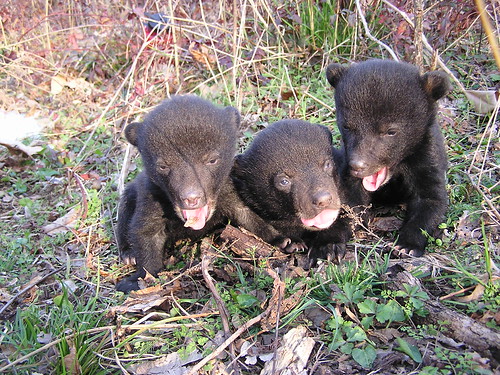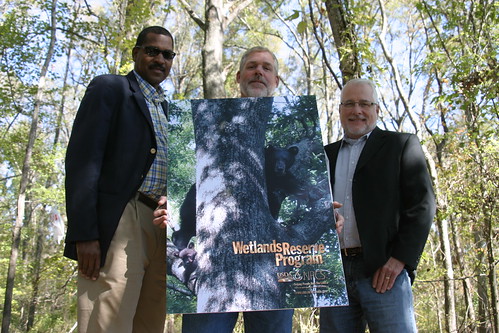
Mississippi was once famous for its black bear population. Hunters from across the U.S. traveled to the state to hunt in the forests of the Delta, which teemed with the shy creatures.
Even President Theodore Roosevelt visited Sharkey County, Miss. in 1902 for a bear hunt that made history—and inadvertently led to the creation of the “Teddy” bear when the president declined to shoot a black bear that his hosts had captured and tied to a tree.
However, over the next century, overhunting and deforestation crippled the black bear population in Mississippi. By the 1990s, black bears had nearly disappeared from the state, with a population just over a dozen.
But luckily, the hard work of local, state and federal groups has changed the fate of the black bear, and now the population is an estimated 120 and climbing.
The bear’s success is credited to growing public awareness of their plight, and to the creation of more forested wetlands. Many groups and individuals are contributing to the increase of wetland habitat utilized by the bears, including USDA’s Natural Resources Conservation Service (NRCS). Its Wetlands Reserve Program (WRP) helps landowners protect, restore or enhance wetlands on their properties.
NRCS works with the Mississippi Department of Wildlife, Fisheries and Parks (MDWFP) to develop conservation plans for landowners wanting to provide prime bear habitat. More than 150,000 acres of wetlands have been established in Mississippi through WRP, and more are on the way.

As more wetlands are established, the Delta is transformed into a network of wooded corridors that allow black bears to roam. Some even roam hundreds of miles a year, says Brad Young, who heads MDWFP’s black bear program.
The bears flourish among briars, cane breaks and other ecosystems of Mississippi’s wetlands. The establishment of more wetlands will continue to help them flourish, he says.
Young had the opportunity to give producers and conservationists an update on the black bear’s success in the state at a recent Mississippi Association of Conservation Districts (MACD) meeting. And he says that each time he gets to tell the state’s black bear story, the ending gets better and better.
For example, just a few years ago, the first bear cubs in decades were born on a former soybean farm that had been converted to a wetland through WRP. And even better news—those two cubs have now had two cubs of their own.
Follow NRCS on Twitter.
Check out other conservation-related stories on the USDA blog.
